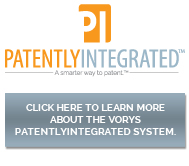Client Alert: Companies Can Be Liable for Direct Infringement Through Other’s Actions
Recently, the U.S. Court of Appeals for the Federal Circuit again took up the issue of liability for divided infringement, re-affirming its prior precedent and clarifying the requirements for holding an alleged infringer directly liable for a third party’s actions. In Travel Sentry, Inc. v. David Tropp, No. 16-2386 (Fed. Cir. Dec. 19, 2017), the Federal Circuit vacated and remanded a district court’s finding of noninfringement, holding that a party directly infringes when it benefits vicariously from a third party’s infringing acts and has the right and ability to stop or limit the infringement.
David Tropp, through his company Safe Skies, LLC, is the owner of U.S. Patent No. 7,036,728 directed to methods of improving airline luggage inspection by a luggage screening entity (e.g., the Transportation Security Administration (TSA)) using dual-access locks. The claims of the ‘728 Patent recite several steps for performing luggage inspection, the last two requiring the screening entity to identify the locks based on an identification structure that signals use of a master key, and then using the master key to open the luggage pursuant to an agreement.
Travel Sentry also manufactures dual-access locks termed “passkey sets” and entered into a Memorandum of Understanding (MOU) with the TSA, in which Travel Sentry provides its passkey sets to the TSA and trains the TSA on recognizing and using the passkey sets properly. The MOU includes language that requires the TSA to accept the passkey sets, but does not require the TSA to actually use them. Tropp sued Travel Sentry for infringement of the ’728 Patent.
The district court granted summary judgment for Travel Sentry of no infringement, holding that Travel Sentry did not “control” the performance of the TSA and, therefore, could not be held liable for direct infringement. Specifically, the district court found that “there is simply no evidence that Travel Sentry had any influence whatsoever on … the method carried out by the TSA, let alone ‘masterminded’ the entire patented process.”
On appeal, the Federal Circuit disagreed, setting forth a roadmap for establishing direct infringement based on third-party actions and re-affirming its prior holdings in which the Court “broadened the circumstances in which others’ acts may be attributed to an accused infringer to support direct-infringement liability for divided infringement.” In rejecting any “mastermind” theory of liability for direct infringement, the Federal Circuit applied Akami Techs., Inc. v. Limelight Networks, Inc., 797 F.3d 1020 (Fed. Cir. 2015) (en banc) and held that direct infringement occurs when all steps of a claimed method are performed by or attributable to a single entity, and an entity is responsible for the acts of others when the entity “directs or controls others’ performance or where the actors form a joint enterprise.” Directing or controlling others’ performance may be found when an alleged infringer (1) “conditions participation in an activity or receipt of a benefit upon performance” and (2) “establishes the manner or timing of that performance.”
The Federal Circuit found that the district court “misidentified” the relevant activity, “misapprehended” the types of applicable benefits, and “mischaracterized” what is required for an alleged infringer to condition a third party’s participation in an activity or receipt of a benefit for finding of direct infringement. Specifically, Travel Sentry conditioned the TSA’s participation in the relevant activity of screening luggage with passkey sets or TSA’s receipt of tangible or intangible benefits flowing therefrom (e.g., avoiding breaking locks, streamlining screening, promotion of public perception of the TSA) upon the TSA’s performance of the two final steps of the ’728 Patent claims. Further, the MOU between Travel Sentry and the TSA established the manner or timing of the TSA’s performance of those final steps. Accordingly, a reasonable jury could find Travel Sentry liable for direct infringement based on the actions of the TSA.
Practice Note: At least the benefit prong of the direct infringement test appears exceptionally lenient to meet. Indeed, the Federal Circuit stated that the mere “fact that TSA entered into the MOU with Travel Sentry implies that TSA believed it would receive some benefit from the arrangement, be it tangible … or intangible” (emphasis in original). Further, conditioning the benefit on mere performance appears sufficient. Parties may accordingly find it most valuable to focus on whether the manner or timing of performance is established by an alleged infringer when arguing for or against direct infringement.

